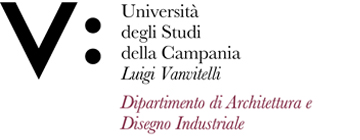Caterina Cristina FIORENTINO
Insegnamento di LABORATORIO DI DESIGN PER LA MODA 1
Corso di laurea in DESIGN PER LA MODA
SSD: ICAR/13
CFU: 14,00
ORE PER UNITÀ DIDATTICA: 112,00
Periodo di Erogazione: Secondo Quadrimestre
Italiano
| Lingua di insegnamento | ITALIANO |
| Contenuti | Ambiti del design trattati nel corso: |
| Testi di riferimento | Agli studenti verranno fornite slide e bibliografia, la bibliografia potrà essere in parte differente, a seconda delle tematiche che ogni gruppo affronterà durante lo svolgimento del progetto di gruppo. |
| Obiettivi formativi | • Sviluppare una ricerca-tendenze critica, che sappia reinterpretare i linguaggi della moda contemporanea; |
| Prerequisiti | come prerequisiti sono richiesti: |
| Metodologie didattiche | Le lezioni sono organizzate in lezioni teoriche frontali, in revisioni collettive per i progetti singoli e in revisioni per il progetto di gruppo. |
| Metodi di valutazione | Le modalità di verifica: |
| Altre informazioni | Parte del corso riguarda il fashion design, altra parte il brand design. |
| Programma del corso | LEZIONI FRONTALI: |
English
| Teaching language | Italian |
| Contents | Areas of design covered in the course: |
| Textbook and course materials | Students will be provided with slides and bibliography; the bibliography may be somewhat different, depending on the topics each group will address during the course of the group project. |
| Course objectives | - To develop a critical research-trend that is able to reinterpret the languages of contemporary fashion; |
| Prerequisites | as prerequisites are required: |
| Teaching methods | Classes are organized into face-to-face lectures, group reviews for individual projects, and group project reviews. |
| Evaluation methods | Verification methods: |
| Other information | Part of the course is about fashion design, other part is about brand design. |
| Course Syllabus | LECTURES: |








